Little is known about the period that Abba Isaiah spent in his native land, as a recluse in the desert of Scetis. His fame began to grow beyond the borders of Egypt only after he settled in a monastery near Gaza and befriended Peter the Iberian, the head of the anti-Chalcedonian resistance in Palestine.[1] The figure of Isaiah was soon appropriated by some “Monophysite” authors like John Rufus and Zachariah Rhetor,[2] who described him in the company of the opponents of the Council of Chalcedon.[3]
The Asceticon of Abba Isaiah contains a series of ascetic precepts for those who want to avoid the dangers of solitary life. The transmission history of the Isaian corpus is complex, as attested by the various forms in which is preserved. Unfortunately, a proper edition of the Greek original is still lacking. The project initiated by Herman Dörries in Götingen, which was supposed to offer the first critical edition of the Asceticon, did not bear fruit. The Greek text is available only in Augustinos Iordanites’ publication of an incomplete 18th century Greek manuscript.[4] Derwas Chitty collated Augustinos’ text with the Bodleian manuscript Cromwell 14[5] and, according to the report,[6] his transcription is deposed in the library of the House of St Gregory and St Macrina, Oxford. Besides, two Greek papyrus fragments containing small portions of the Asceticon were published.[7]
In 1956, Antoine Guillaumont edited the logoi of Abba Isaiah after several fragmentary Sahidic manuscripts.[8] As for Arabic, Joseph-Marie Sauget identified and published a cluster of fragments in the Vatican library,[9] while Victor Arras edited few bits that survived in Ethiopic.[10]
It was only in 1968 that the complete text of the Asceticon became largely available for scholarly research due to René Draguet’s edition and translation of the Syriac version.[11] Besides providing a detailed survey of the textual transmission of the Asceticon in Syriac, Draguet was the first to use a larger number of Greek manuscripts, often giving in parallel columns the Syriac translation and his own collation of the Greek text.
We also have knowledge of some Armenian[12] and Georgian fragments of the Asceticon. Finally, a Sogdian translation of the brief piece entitled “On humility” was found by the German archeologists at the ruins of a Nestorian monastery in the Turfan oasis.[13]
All these textual evidences show that the Asceticon was a bonum communis, being appropriated, at the same time, by the Chalcedonians, “Monophysites,” and even Nestorians.
*
Although the Sahidic version of the Asceticon is attested by a good number of fragments, no Bohairic manuscript has been announced yet. The only surviving witness in this dialect is thought to be a quotation which occurs in a catena on the four Gospels.[14] The fragment in question was published recently by Youhanna Nessim Youssef,[15] who assumed that a Bohairic version of the Asceticon must have existed: “[i]l est vraisemblable qu’une collection Copte Bohaïrique de l’Asceticon d’Isaïe existait en plus de ce qui est connue de la version Sahidique.”[16]
I should like to mention here that, although not yet identified, several such Bohairic fragments of the Asceticon were published already in 1926 by Hugh G. Evelyn White in his Monasteries of the Wadi ’N Natrun.[17] Thus, four out of seven parchment fragments edited by Evelyn White under the heading “Monastica,” belong precisely to the Logoi of Abba Isaiah. Their original provenance is the Monastery of St. Macarius in Wadi ’N Natrun, our main source of early Bohairic manuscripts.
Here is Evelyn White’s transcription and translation of the fragments:
 The first two fragments are kept in the Coptic Museum in Old Cairo, whereas the latter two are part of the Tischendorf collection in Leipzig University Library. The fragments come from separate codices and they contain the following logoi:
The first two fragments are kept in the Coptic Museum in Old Cairo, whereas the latter two are part of the Tischendorf collection in Leipzig University Library. The fragments come from separate codices and they contain the following logoi:
Codex A
Frag. 2 (Cairo, no. 101) = Syriac Logos 15 (Draguet, CSCO 294, p. 301ff.)
Frag. 3 (Cairo, no. 191) = Syriac Logos 15 (Draguet, CSCO 294, p. 320-321)
Codex B
Frag. 4 (Cod. Tisch. XXVI, 24) = Syriac Logos 11 (Draguet, CSCO 293, p. 154-155)
Frag. 5 (Cod. Tisch. XXVI, 24) = Syriac Logos 11 (Draguet, CSCO 293, p. 169-170)
These Bohairic fragments represent an important witness in the chain of transmission of the Asceticon, as they provide us with the missing link between the Sahidic and Arabic versions. I will conclude this brief note with the remark that the Logos 15, attested by Evelyn White’s “fragment 3,” is attributed in Greek also to Athanasius of Alexandria (Sermo pro iis qui saeculo renuntiarunt [CPG 2287; PG 28, coll. 1409-1420]).[18]
[1] On the relationships between Peter the Iberian and Isaiah, see most recently C. B. Horn, Ascetism and Christological Controversy in Fifth-Century Palestine. The Career of Peter the Iberian (Oxford Early Christian Studies; Oxford – New York: Oxford University Press, 2006) esp. 152-170.
[2] F. Nau, Jean Rufus, Plérophories (Patrologia Orientalis 8/1; Paris 1911) 27-28, 48, 101, 121-133; F. J. Hamilton & E. W. Brooks, The Syriac Chronicle Known as that of Zachariah of Mitylene (London: Methuen, 1899) 125, 137; cf. also the references to Abba Isaiah in John Rufus, Vita Petri Iberi (C. B. Horn & R. R. Phenix Jr., John Rufus: The Lives of Peter the Iberian, Theodosius of Jerusalem, and the Monk Romanus [Writings of the Greco-Roman World, 24; Atlanta: Society of Biblical Literature, 2008] 203-205, 243-247) and Vita Isaie by Zachariah Rhetor (edited in E. W. Brooks, Vitae virorum apud Monophysitas celeberrimorum 2 vols. [CSCO 7-8. Scriptores Syri 7-8; Paris – Leipzig: Otto Harrassowitz, 1907] 1: 3-16 [Syriac text], 2: 3-10 [Latin translation]).
[3] On Isaiah’s “Monophysite” sympathies, see H. Vailhé, “Un mystique monophysite: le moine Isaïe,” Échos d’Orient 9 (1906) 81-91; H. D. Keller, “L’abbé Isaie-le-jeune,” Irénikon 16 (1939) 113-126.
[4] The monk Augustinos, Tou hosiou patros hemon abba Esaiaou logoi 29 (Jerusalem, 1911; 2nd ed. S. Schoinas, Volos, 1962).
[5] D. J. Chitty, The Desert a City: An Introduction to the Study of Egyptian and Palestinian Monasticism under the Christian Empire (Oxford: Blackwell, 1966) 74; Idem, “Abba Isaiah,” Journal of Theological Studies n.s., 22 (1971) 47-72, at 47.
[6] See K. Ware & S. Brock, “The Library of the House of St Gregory and St Macrina, Oxford: The D.J. Chitty Papers,” Sobornost, incorporating Eastern Churches Review 4 (1982) 56-57; M. Plested, The Macarian Legacy: The Place of Macarius-Symeon in the Eastern Christian Tradition (Oxford Theological Monographs; Oxford – New York: Oxford University Press, 2004) 176.
[7] One of them is in Columbia University Library, ed. by E. R. Hardy, “A Fragment of the Works of the Abbott Isaias,” Annuaire de l’Institut de Philologie et d’Histoire Orientales et Slaves 7 (1944) 127-140, reedited in R. S. Bagnall, T. T. Renner & K. A. Worp, Columbia Papyri VIII (American Studies in Papyrology, 28; Atlanta, Georgia: Scholars Press, 1990) 17-28 (= no. 192), and a second one in Florence, identified for the first time by G. Mercati, “Sul papiro greco dell’Archivio di Stato di Firenze,” Aegyptus 32 (1952) 464-473, esp. 469-470.
[8] Preliminary codicological study of the fragments in A. Guillaumont, “La recension copte de l’Ascéticon de l’Abbé Isaïe,” in Coptic Studies in Honor of Walter Ewing Crum (Boston 1950) 49-60. The fragments were edited in A. Guillaumont, L’Asceticon copte de l’abbé Isaïe. Fragments sahidiques édités et traduits (Bibliothèque d’études coptes, 5; Cairo 1956). Additional Coptic fragments in E. Lucchesi, “Le dossier d’Apa Zénobe. Addenda et corrigenda. Appendice II: Un Logos inconnu d’Isaïe de Scété. Chenouté, Isaïe et Moïse,” Analecta Bollandiana 117 (1999) 67-80, at 77; A. Suciu, “The Borgian Coptic Manuscripts in Naples: Supplementary Identifications and Notes to a Recently Published Catalogue,” forthcoming in Orientalia Christiana Periodica 77 (2011).
[9] J.-M. Sauget, “La double recension arabe des ‘Préceptes aux novices’ de l’Abbé Isaïe de Scété,” in Mélanges Eugène Tisserant vol. 3/2 (Studi e testi, 233; Città dell Vaticano: Biblioteca Apostolica Vaticana, 1964) 299-356; J.-M. Sauget, “Les fragments de l’Asceticon de l’Abbé Isaïe de Scété du Vatican arabe 71,” Oriens Christianus 48 (1964) 235-259.
[10] V. Arras, Collectio monastica (CSCO 238-239. Scriptores Aethiopici, 45-46; Louvain: Secrétariat du CorpusSCO, 1963). In ge’ez the Isaian material is attributed to Macarius, Ephraim and Moses of Scetis.
[11] R. Draguet, Les cinq recensions de l’Ascéticon syriaque d’abba Isaïe 4 vols. (CSCO, 289-290, 293-294. Scriptores Syri, 120-123; Louvain: Secrétariat du CorpusSCO, 1968). Additional leaves from one of the fragmentary codices edited by Draguet were announced recently by S. Brock, “Notulae Syriacae: Some Miscellaneous Identifications,” Le Muséon 108 (1995) 69-78, at 73-74. An extract from the Asceticon in Syriac was published in F. Graffin, “Un inédit de l’abbé Isaïe sur les Étapes de la Vie Monastique,” Orientalia Christiana Periodica 29 (1963) 449-454.
[12] B. Outtier, “Un Patericon arménien (Vitae Patrum, II, p. 505-631),” Le Muséon 84 (1971) 299-351, at XXX.
[13] N. Sims-Williams, The Christian Sogdian Manuscript C2 (Schriften zur geschichte und kultur des Alten Orients. Berliner Turfantexte, 12; Berlin: Akademie-Verlag, 1985) 165-167 (= no. 12).
[14] The codex in which the Isaiah passage occurs is dated 888 AD and was edited a long time ago by P. De Lagarde, Catenae in Evangelia Aegyptiacae Quae Supersunt (Göttingen: Arnold Hoyer, 1886).
[15] Y. Nessim Youssef, “Un complément de l’Asceticon copte de l’Abbé Isaïe,” Vigiliae Christianae 55 (2001) 187-190.
[16] Nessim Youssef, “Un complément,” 190.










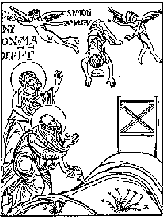




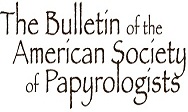
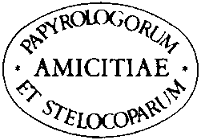
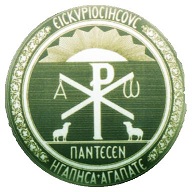





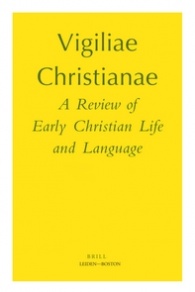






Pingback: Two Coptic Fragments Containing Extracts from Isaiah of Scetis: A New Manuscript Witness of the Asceticon | Alin Suciu
Pingback: Once Again on the Asceticon of Abba Isaiah | Alin Suciu
Pingback: The “Asceticon” of Abba Isaiah of Scetes | Citydesert